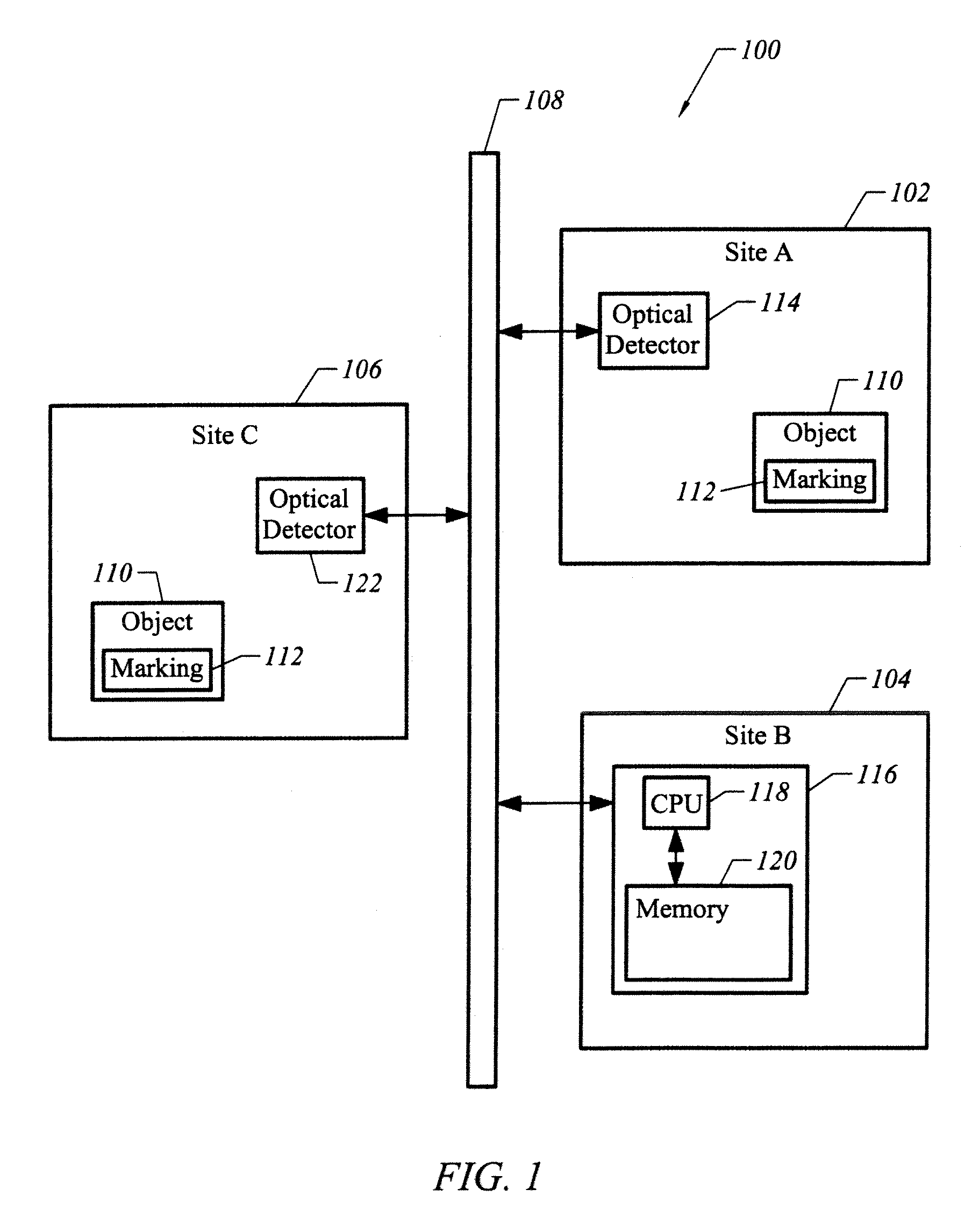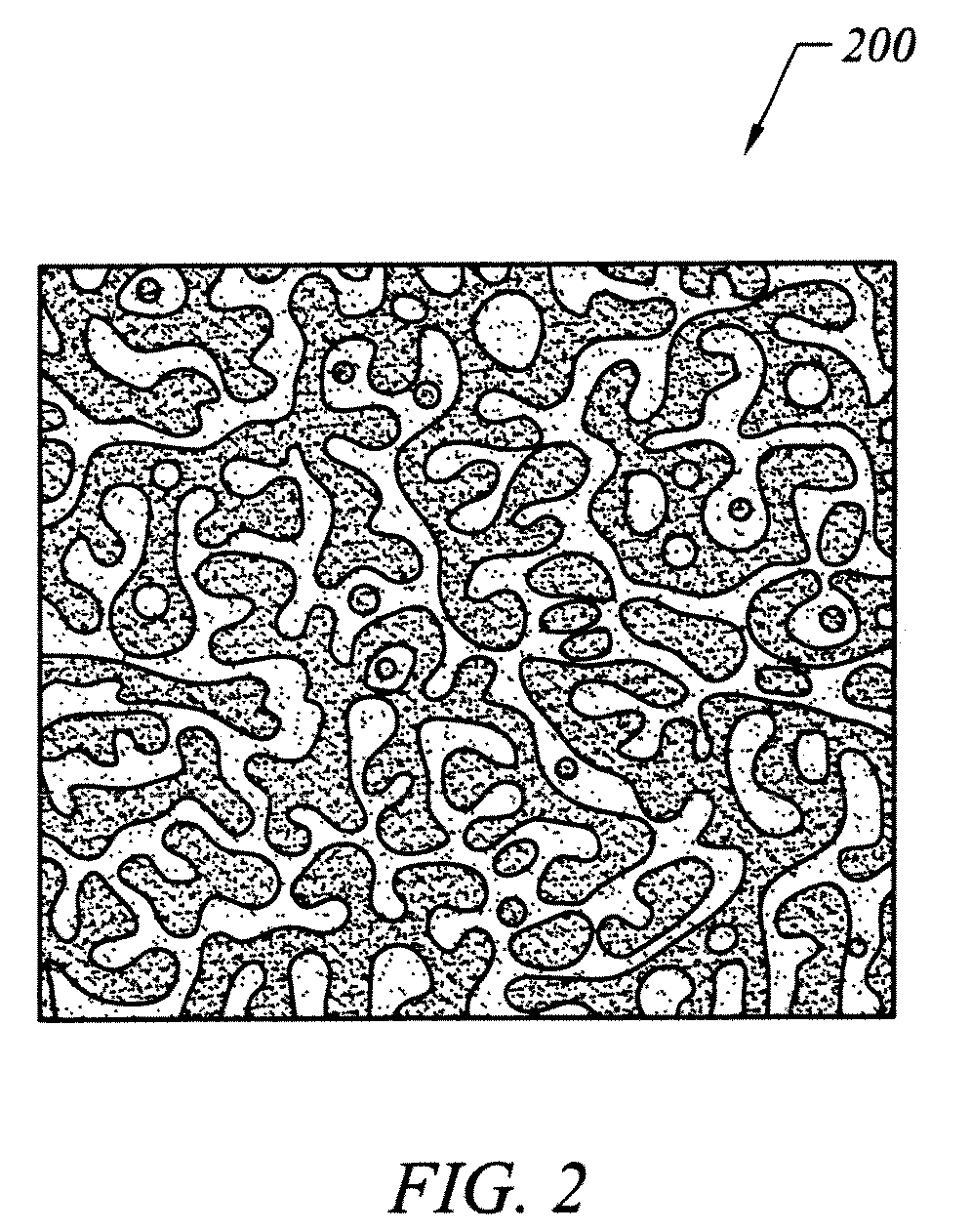Authenticating and identifying objects using markings formed with correlated random patterns
a random pattern and marking technology, applied in the field of authenticating and identifying objects, can solve problems such as limited effectiveness in preventing counterfeiting
- Summary
- Abstract
- Description
- Claims
- Application Information
AI Technical Summary
Benefits of technology
Problems solved by technology
Method used
Image
Examples
example 1
Formation of Marking
[0100]A mixture was prepared from three stock solutions, namely 0.3 ml of stock solution 1 (0.52 g of polystyrene in 10 ml of toluene), 0.3 ml of stock solution 2 (0.51 g of polystyrene-co-poly(methyl methacrylate) in 10 ml of toluene), and 0.01 ml of stock solution 3 (1.2 mg of ADS RE100 light-emitting polymer in 0.6 ml of toluene). The mixture was drop-casted on a glass slide, and solvents were evaporated under ambient conditions. A resulting thin film was observed to have a correlated random pattern, and to exhibit luminescence upon irradiation with light in the ultraviolet range (e.g., 365 nm).
example 2
Formation of Marking
[0101]A mixture was prepared from two stock solutions, namely 1 ml of stock solution 1 (0.52 g of polystyrene in 10 ml of toluene) and 1 ml of stock solution 5 (colloidal silica in dimethylactemide—available from Nissan Chemicals). The mixture was drop-casted on a glass slide, and solvents were evaporated under ambient conditions. A resulting thin film was observed to have a correlated random pattern.
example 3
Formation of Marking
[0102]A mixture was prepared from two stock solutions, namely 0.1 ml of stock solution 1 (0.52 g of polystyrene in 10 ml of toluene) and 0.1 ml of stock solution 2 (0.51 g of polystyrene-co-poly(methyl methacrylate) in 10 ml of toluene). The mixture was drop-casted on a glass slide, and solvents were evaporated under ambient conditions. A resulting thin film was observed to have a correlated random pattern.
PUM
| Property | Measurement | Unit |
|---|---|---|
| quantum efficiency | aaaaa | aaaaa |
| wavelengths | aaaaa | aaaaa |
| wavelengths | aaaaa | aaaaa |
Abstract
Description
Claims
Application Information
 Login to View More
Login to View More - R&D
- Intellectual Property
- Life Sciences
- Materials
- Tech Scout
- Unparalleled Data Quality
- Higher Quality Content
- 60% Fewer Hallucinations
Browse by: Latest US Patents, China's latest patents, Technical Efficacy Thesaurus, Application Domain, Technology Topic, Popular Technical Reports.
© 2025 PatSnap. All rights reserved.Legal|Privacy policy|Modern Slavery Act Transparency Statement|Sitemap|About US| Contact US: help@patsnap.com



